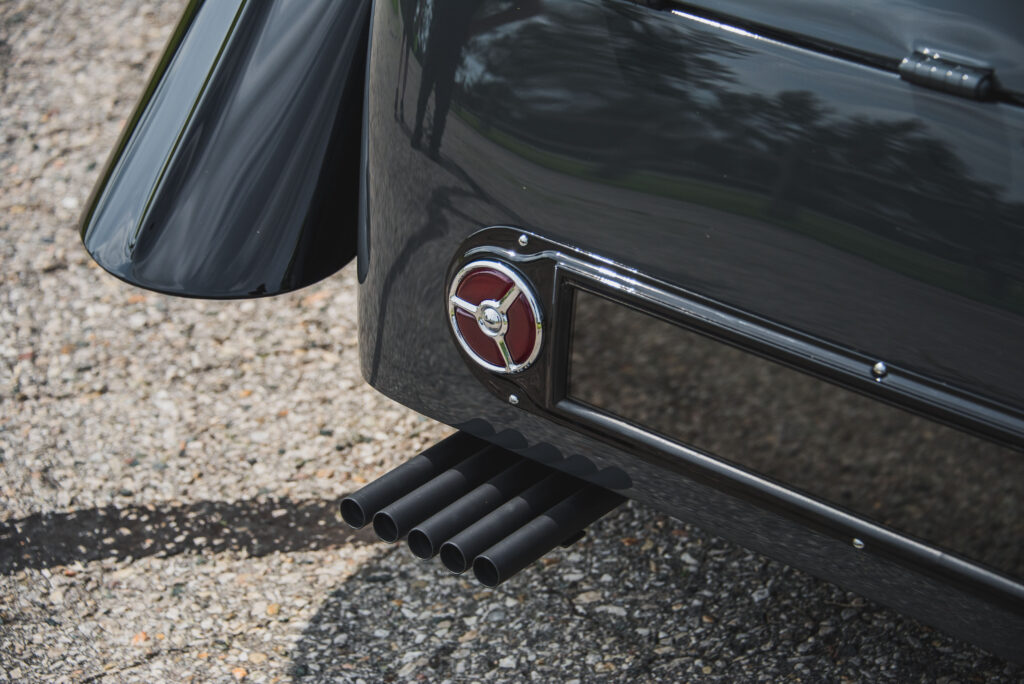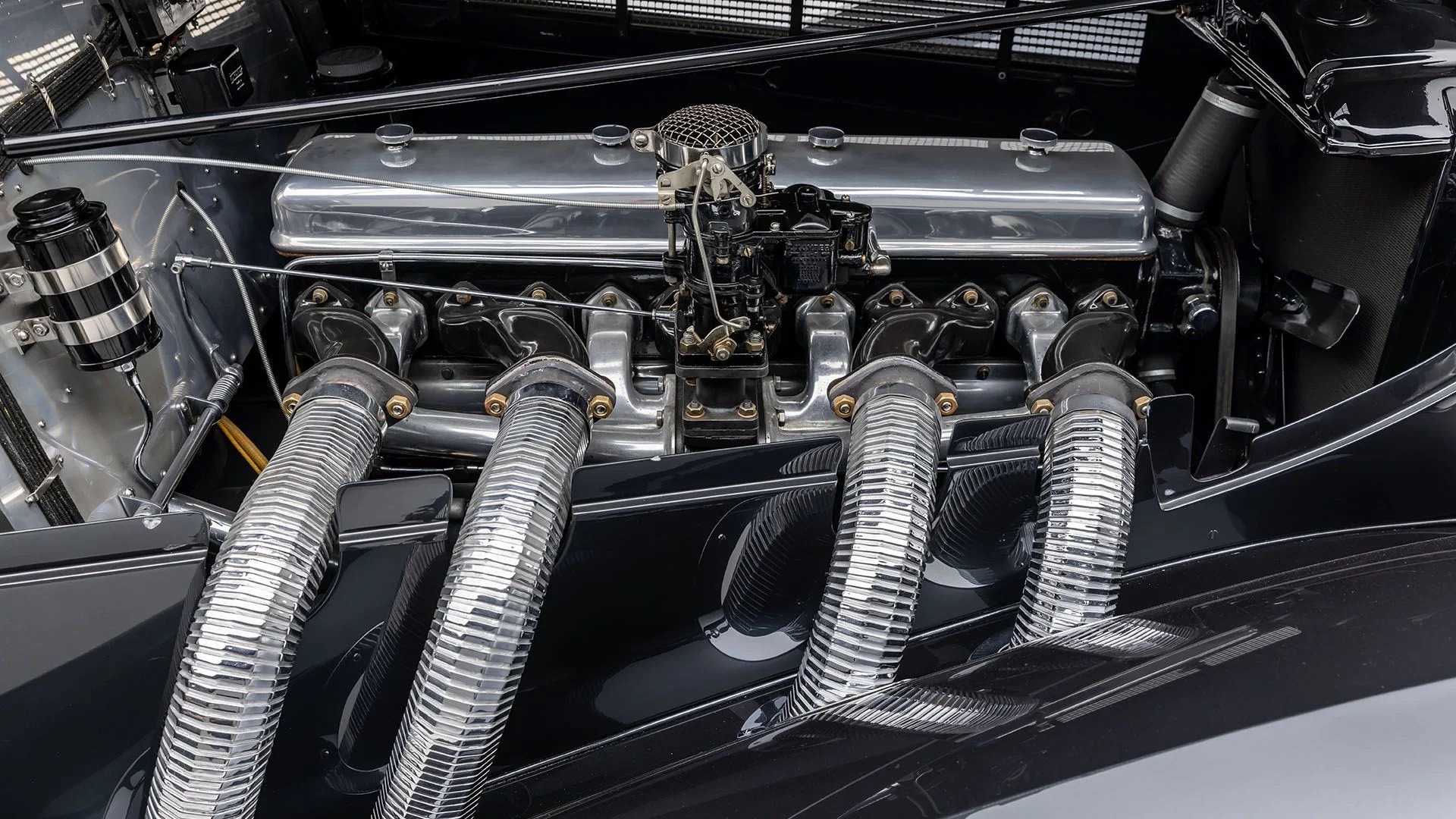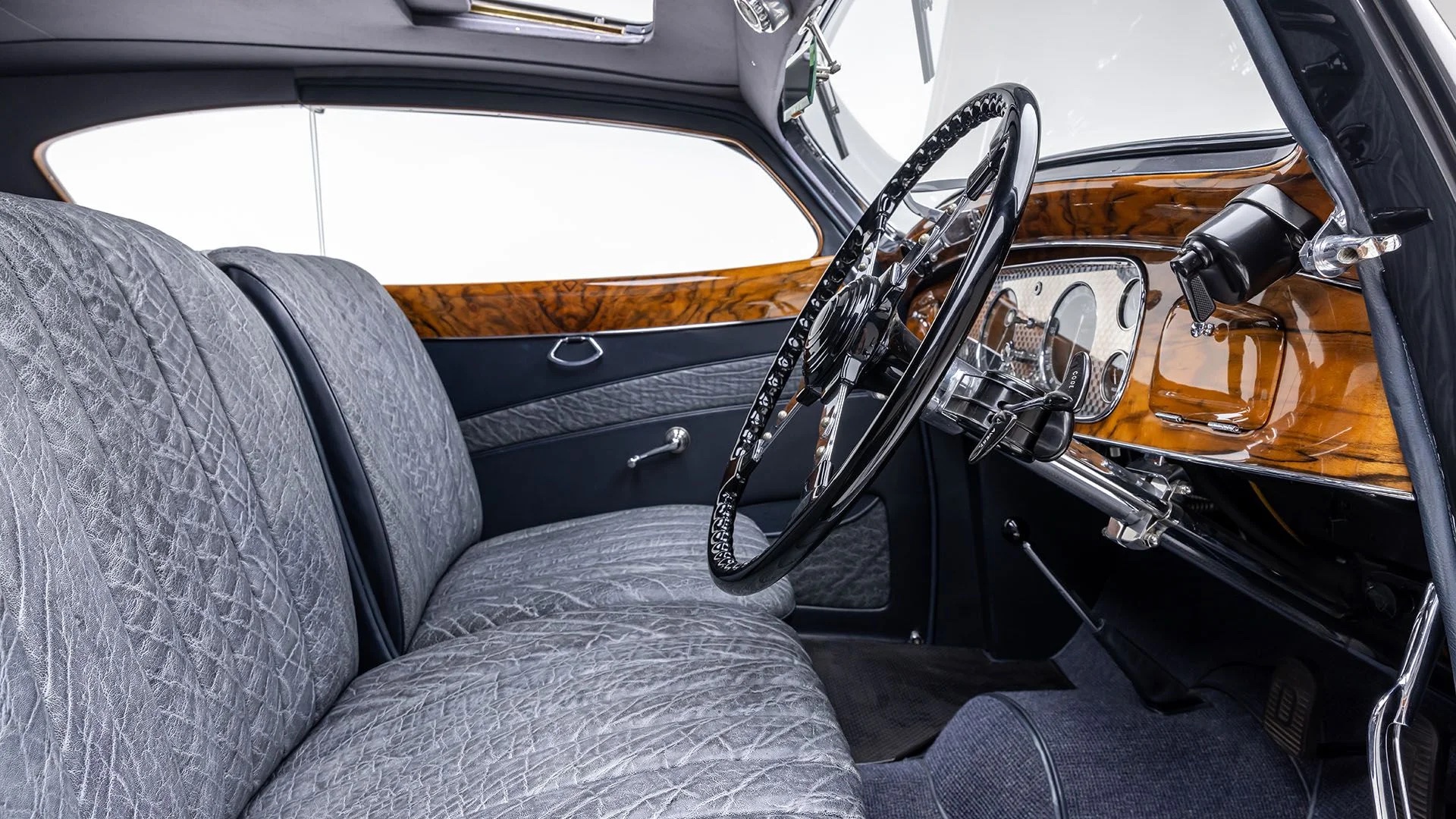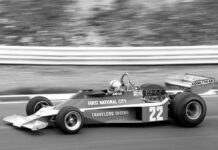The annual block of high-profile auctions in Monterey may be a watering hole for top-shelf Ferraris, but Pebble’s proclivity for serious prewar metal is just as remarkable. Big-body pre- and inter-war wonders, the kind you might expect to see at next year’s concours, (buy on Saturday…show on Sunday?) leave buyers more spoiled for choice than perhaps at any other auction event in the world.

This year’s sale field is no different, with a tremendously healthy docket of the early stuff. So far, 204 automobiles built before World War II are consigned for Monterey ’23, and early estimates put their value at about a quarter of the overall sales for the whole week.

1937 Bugatti Type 57SC Tourer by Corsica
Any proper group of prewar standouts would be incomplete without a Bugatti. While a handful of Molsheim masterworks will cross an auction block in Monterey this year, this rakish 57SC Tourer is one of the more curious. Ordered new by Bugatti’s London outfit, chassis 57512 was first delivered to Maurice Fox-Pitt Lubbock following London coachbuilder Corsica’s completion of this intriguing four-seat open-tourer bodywork. Lubbock thoroughly enjoyed his 57S until 1947, when he assumed the role of Vice-Chairman of Rolls-Royce.
At some point under his ownership, the 57S was upgraded to vaunted “SC” configuration with a Roots-style supercharger. By 1955, the original Corsica touring bodywork was stored in favor of a simple two-seat racing configuration that persisted through a roster of owners and remained until 1998, when a previous owner re-purchased the Corsica bodywork and returned chassis 51512 to its original state. Eventually, the car was acquired by the renowned Blackhawk collection where it was fully restored—albeit while retaining a number of body modifications carried over from its time as a two-seat competition car.
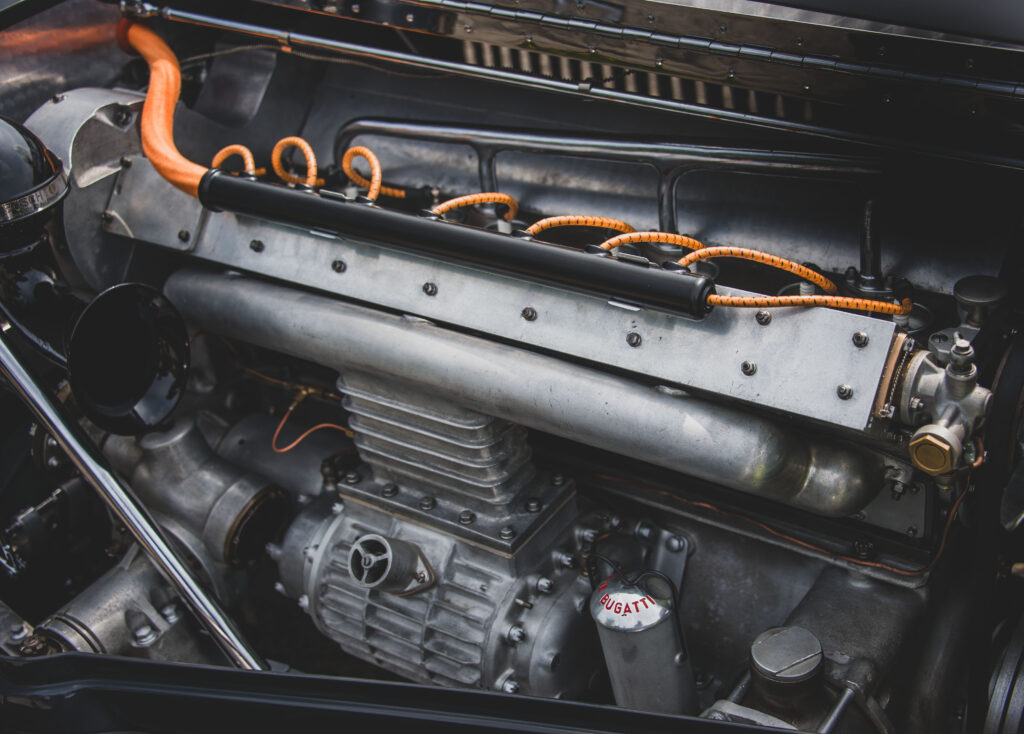
The car resurfaced in a big way in 2021, when it sold at RM Sotheby’s 2021 Arizona sale, garnering $4,735,000. It was immediately turned over to RM Restorations, leading to a project tallying up a total investment of 6000 hours and a reported $700K in bills. According to RM’s description, the comprehensive restoration revealed very little of the body was left unmodified from its original form, necessitating the creation of “several components…from scratch,” though chassis 57512 miraculously retains its original engine, gearbox, differential, and in-period supercharger.
In the pantheon of early Bugattis, the 57S is one of the all-timers. Jean Bugatti’s Ventoux, Stelvio, Atalante and Atlantic designs for the Bug 57 are considered some of the most elegant cars in history, full stop. Compared to the dramatic, sweeping lines on the Atalante and Atlantic, this Corsica Tourer is markedly British in appearance, with a side profile reminiscent of a contemporary Lagonda roadster or sporting Bentley.
Hardly the worst association—and the market is known to reward curiosities—but we’ll have to wait and see if the major investment into restoration pays off compared to the original purchase in the far hotter market of 2021. The presale estimate is $5.5M-$7.0M.
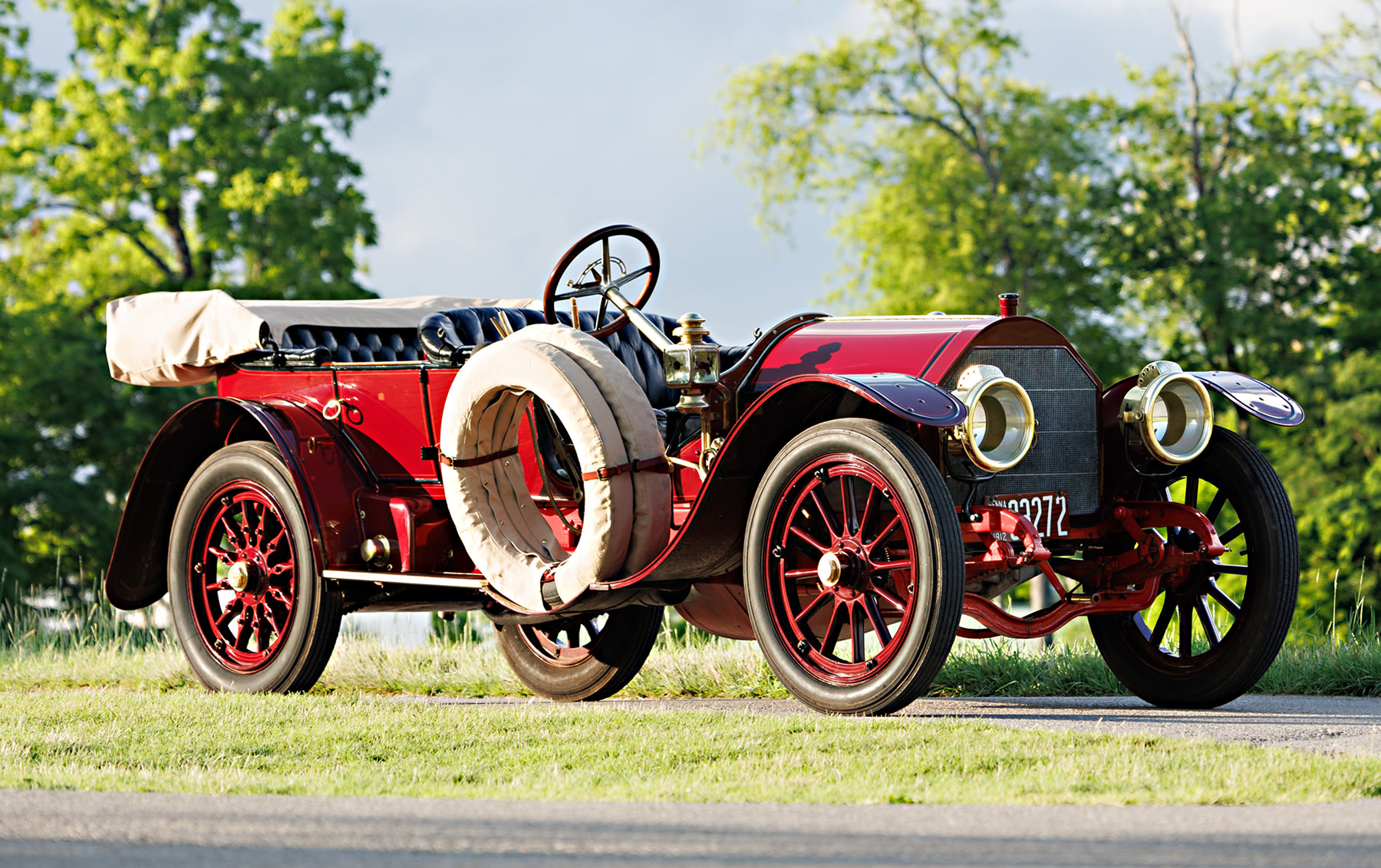
1912 Simplex 50 HP Toy-Tonneau
It feels like it’s been eons since the eye-popping $4.85 million sale of Elenora Sears’ 1912 Torpedo Tourer back in January. That a 111-year-old car would be the standout sale at a venue known for modern exotics and muscle car mainstays came as a wonderful surprise, and the prewar collector car community noticed.
So, it comes as no surprise that there are three brass-era Simplexes up for grabs in Monterey. Not only is this one of the largest clusters of Simplex offered at public auction in recent memory, but it’s the first time we’ve seen a Simplex offered since Bonhams’ Arizona bombshell. What a coincidence!
Owing to the marque’s inherent collectability as arguably the preeminent brass-era sporting marque, it’s tough to find an unremarkable example, but Mecum’s 1913 Model 38 is considered the “least” of the three. The five-passenger touring Model 38 was the storied automaker’s entry-level offering in that year, but with what appears to be an excellent overall condition and handsome combination of paint and upholstery, Mecum’s pre-sale estimate of $300,000 to $350,000 is anything but “base.”
We could spend a few thousand words on Bonhams’ stately 1914 Simplex 50 HP Tourer—a wonderfully restored and well-documented concours tour-de-force—but it’s Gooding’s 1912 Simplex 50 HP Toy-Tonneau that has us most excited. Here’s a sentence we’d never think we’d ever type—a 111-year-old Simplex 50 HP, offered new-to-market from the original family.
Purchased new in the spring of 1911 by William P. Snyder Jr., the Toy-Tonneau gradually passed down through three generations, now finally leaving the Snyder family for new stewardship. For major collectors and Simplex enthusiasts, it’s a momentous event and very likely might be a once-in-a-lifetime chance. As such, we believe every bit of Gooding’s $3M-$4M estimate.
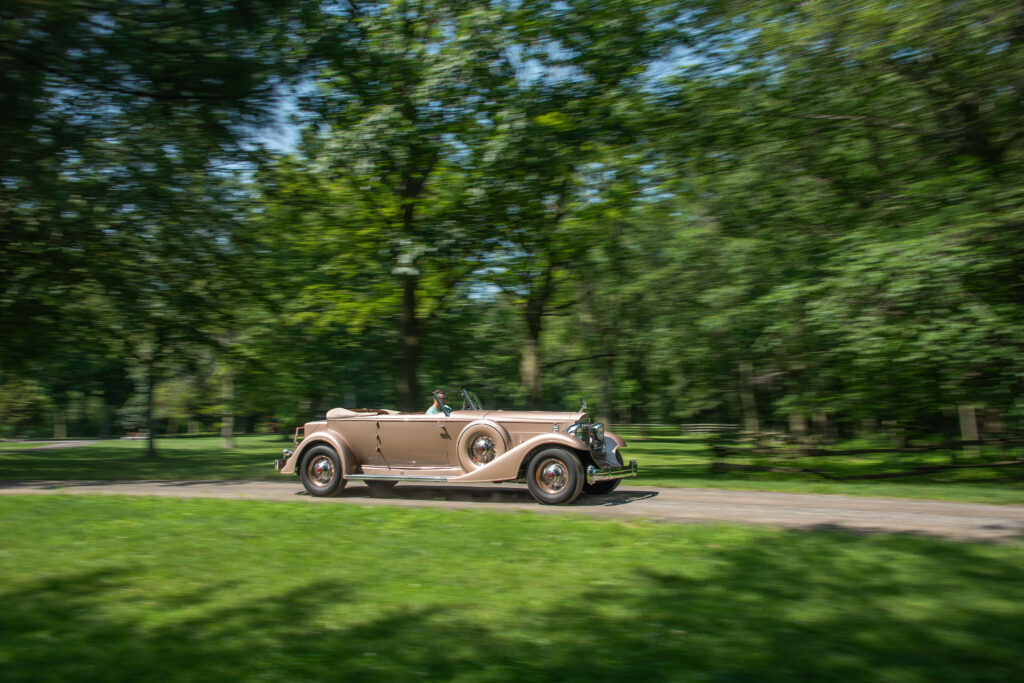
1933 Packard Twelve Individual Custom Convertible Victoria
Another one of America’s greatest marques, Packard continues to feature prominently at high-end catalog auctions. RM Sotheby’s stunning 1933 Packard Twelve is one of the superlative examples of the V-12 Packard breed, being one of what is estimated to be 10 to 12 Individual Custom Convertible Victorias built from 1932-34, and the lone example draped on the 1006 chassis.
Along with the large Duesenbergs, it embodies the grand elegance of the prewar giants, and forms a spiritual bedrock to “serious” car collecting. As is the case with Packards of this caliber, the car arrives on RM’s block with an impressive array of documentation, including images of the car at the factory.

1937 Delage D8-120 Letourneur et Marchand Coach JeLM
One of the standout French cars to hit the Peninsula next month, this delightful Delage is one of a handful of prestige classics from the Academy of Art University Automobile Museum on offer at Broad Arrow’s Radius auction at the Monterey Jet Center.
Like Bugatti and eventual parent company Delahaye, Delage built an early reputation in the crucible of motorsport. Edwardian-era Delages enjoyed success in popular endurance events, with later competition Delages of the 1920s and 1930s using complex, advanced powertrains and chassis for significant success on the competitive European grand prix circuit.
This D8-120 is represented as the only extant example of French coachworks Letourneur & Marchand’s influential “Coach JeLM” built on Delage’s range-topping eight-cylinder platform. As the first model engineered after the Delahaye takeover, the D8’s 4.0-liter inline-eight is based heavily on Delahaye’s extremely successful 135 MS six-cylinder, making similar use of an existing Delahaye chassis design.
Both in period and today, a coachbuilt Delage is a case-study in timelessness. Its apparent unique status, concours condition, prior Pebble success (it was a class runner-up in 2006) and thick stack of documentation, add up to a $1.2M-$1.6M estimate.

1936 Hispano-Suiza J12 d’Ieteren Frères Cabriolet
Spanish by birth, French by association. The Paris-built Hispano-Suiza J12 was briefly, by some accounts, the most advanced vehicle in production, a connotation owed in no small part to its tremendous 9.5-liter V-12. Cutting edge powertrain tech like overhead valves via pushrods and seven-main-bearing crankshaft ensured uncanny reliability and shot output to a contemporaneously mighty 220 hp.
Beyond pure technical expertise, Hispano-Suizas (HS) were almost uniformly large, visually imperious cars hiding majestic interiors cut from exotic hides and rare woods. Naturally, this attracted a rather aristocratic customer base; the roster of royals and political heads-of-state who were shuttled in a HS is likely as long as the car itself.
Broad Arrow’s stunning J12 d’Ieteren Feres Cabriolet lacks a regal appointment, but the car’s comprehensive ownership history tracks its provenance through a reclusive Dutch doctor to a Vanderbilt prior to a spate of modern-day collectors, the last of which being the Academy of Art University Automobile Museum. Like the Delage, this magnificent HS is part of the museum’s ongoing deaccessioning, a process that has routed a 1930 Duesenberg Model J Murphy, a Stutz DV-32 Super Bearcat, and 1935 Mercedes-Benz 500 K Cabriolet to Broad Arrow’s block.
Cool cars one and all, but do any of them have crystal ashtrays?
We thought not. Checkmate, Hispano-Suiza.

1938 BMW 328 ‘Special Competition’ Roadster
Now for something completely different. RM Sotheby’s BMW 328 might be one of the most significant Bimmers we’ve seen at public auction in years, having essentially launched BMW’s serious motorsports effort in the late 1930s with respectable finishes at Le Mans, Belgrade Grand Prix, and the short-lived Mille Miglia Africana. Prior to the outbreak of World War II, it looked like the nascent BMW—then stylized as B.M.W.—had a genuine shot at becoming a leading power on the global motorsport stage.
Wartime disruption cut the successful career of the 328 short, but BMW wasn’t completely down and out—and we know the ending to that story. What you probably don’t know is the incredible story of how the no. 27 competition 328 was lost to history until 2017, when a car thought to be a standard 328 was authenticated by BMW itself as the missing Le Mans legend.
As part of our “Great Reads” series, we covered the original history and subsequent rediscovery of this significant BMW in far, far greater depth than we ever could here. So before this white roadster hits the auction block, check out our complete breakdown here.

1935 Duesenberg Model SJ ‘Sweep Panel’ Dual-Cowl Phaeton
Back to the great Americans. Where there are Bugattis, there are often Duesenbergs, and Monterey is a particular magnet for both. Aside from Broad Arrow’s delightful Model J Murphy, RM Sotheby’s mighty Model SJ “Sweep Panel” Phaeton holds court for attending Auburn-Cord-Deusenberg (ACD) enthusiasts.
Like that pretty Packard, there’s not much here we’ve not seen before—but that doesn’t mean it’s not one of Car Week’s prize jewels. This is one of just four LaGrande-bodied phaetons built on the ridiculously desirable supercharged “SJ” chassis, carrying Deusey’s supercharged inline-eight good for 320 hp in-period, a then-hysterical output besting all but the most powerful of grand prix cars of the time.
With strong historical records and a recent six-figure aesthetic refresh, expect a number of big ACD players driving the SJ’s final bid right up (and perhaps beyond) RM’s $2.85M-$3.75M estimate range.
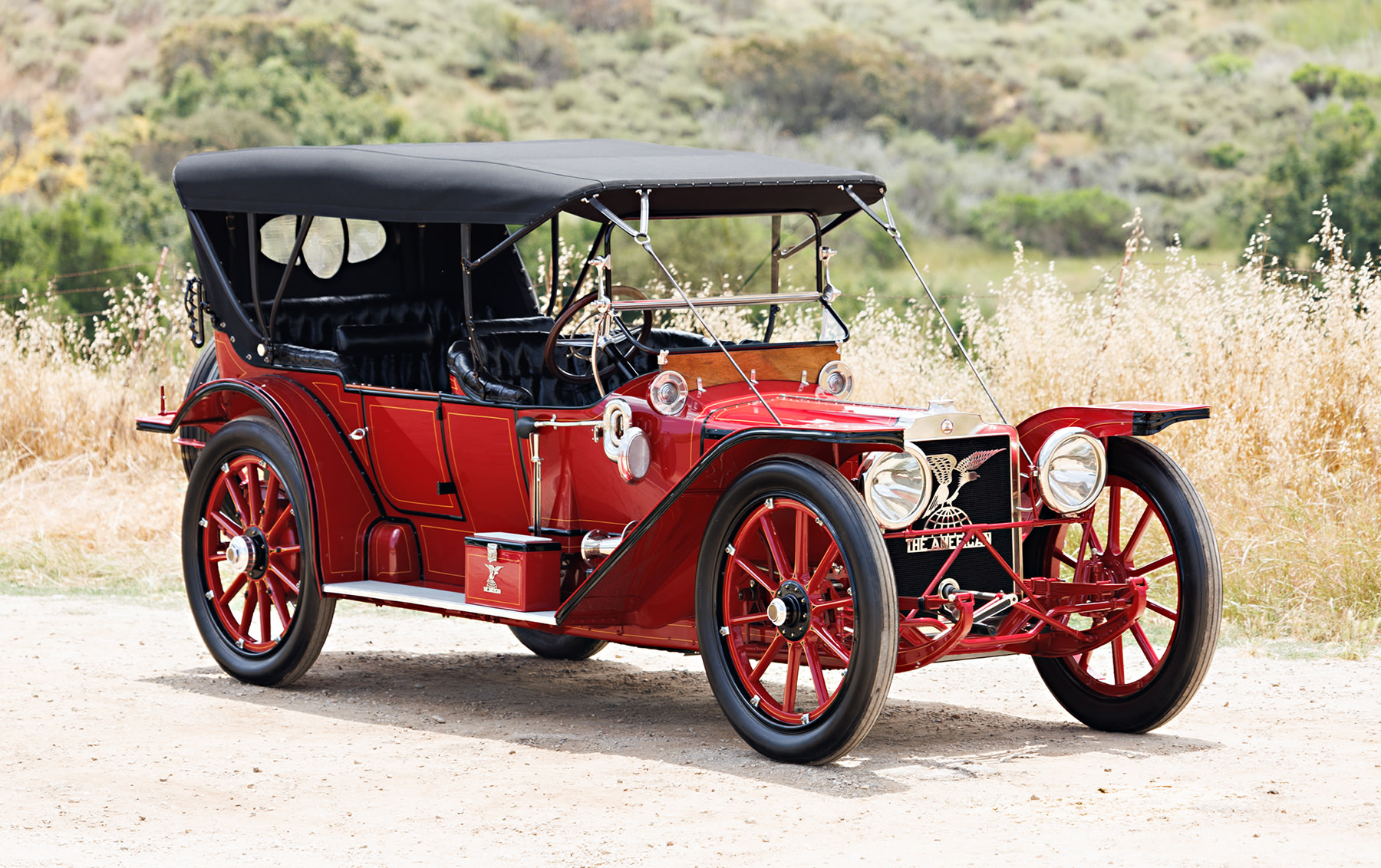
1913 American Underslung Type 56-A Traveler
Let’s end this with another Brass-Era legend. In an era of spindly, high-riding vehicular armchairs, the American Motor Car Company’s American Underslung defined its evocative name with its hung axles and powerful four-cylinder, an innovative chassis configuration that lent the cars their signature sporting appearance and a significantly lower center of gravity.
Expensive and less practical than its competitors, American Motor Car Company entered receivership in 1913. Don’t worry—founder Harry Stutz went on to achieve great things under the banner of his namesake motor company, including the iconic Stutz Bearcat.
Pre-dating even the primordial Mercer Raceabout (one of which is also on offer here), the Underslung is often considered America’s first sports car, and a perfect storm of rarity, collectability, and historical importance keep prices elevated. Take Gooding’s $800,000-$1.2M pre-sale estimate on its 1913 Underslung; It’s one of just 27 Underslungs known to exist, and the lone known example of the Type 56-A Traveler.
Report by Conner Golden for hagerty.com


